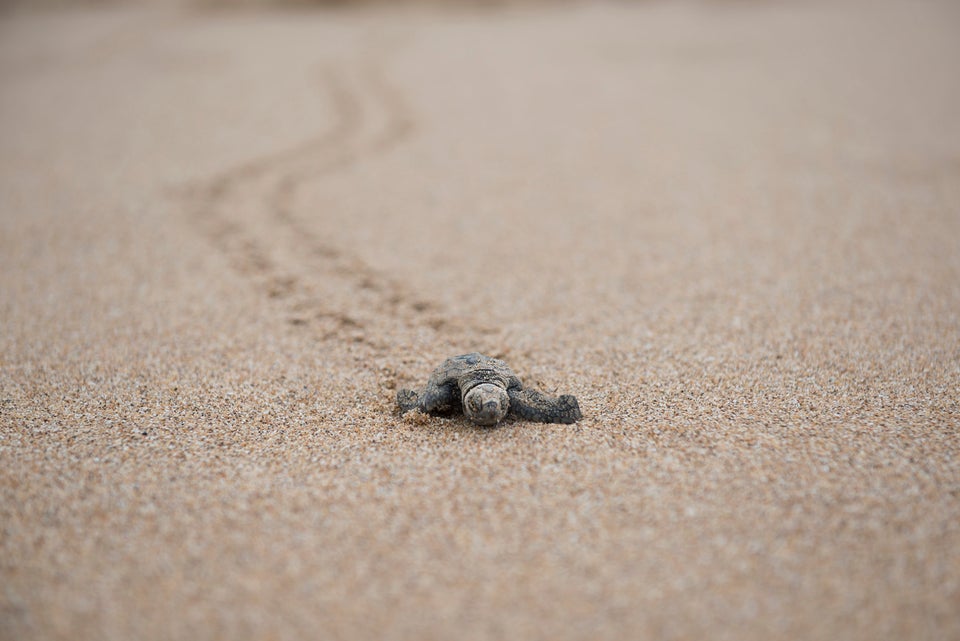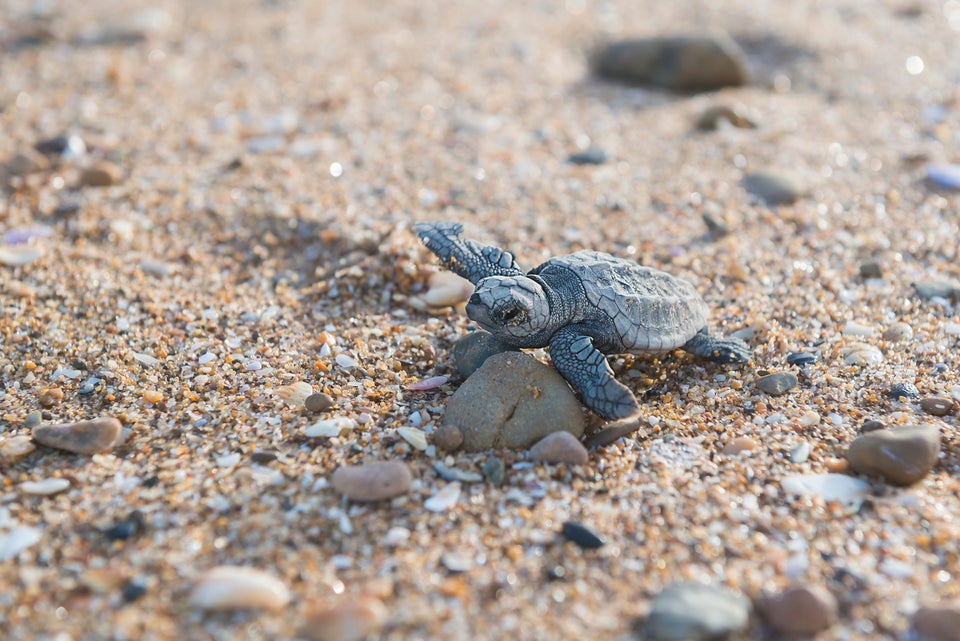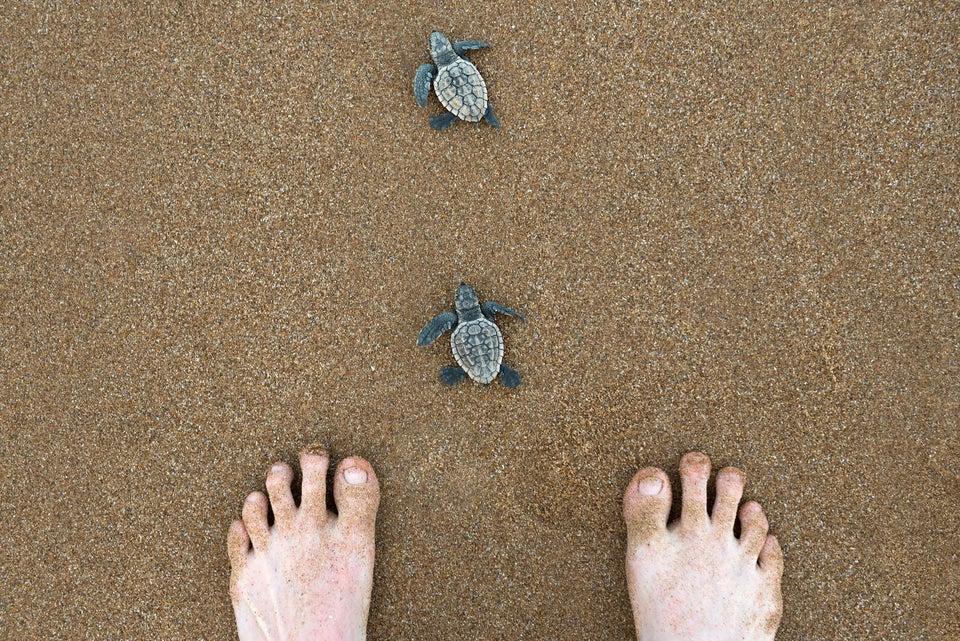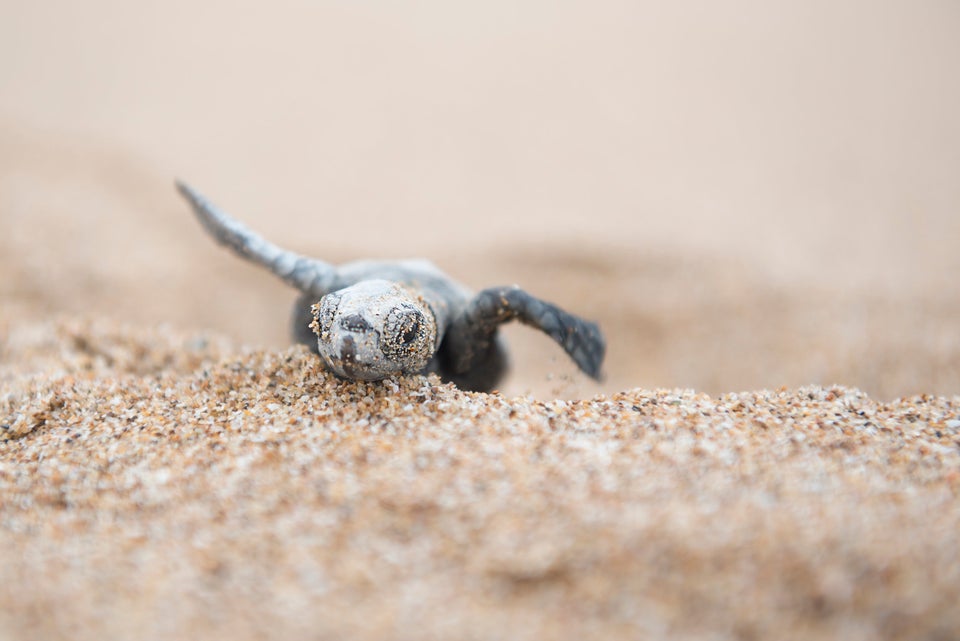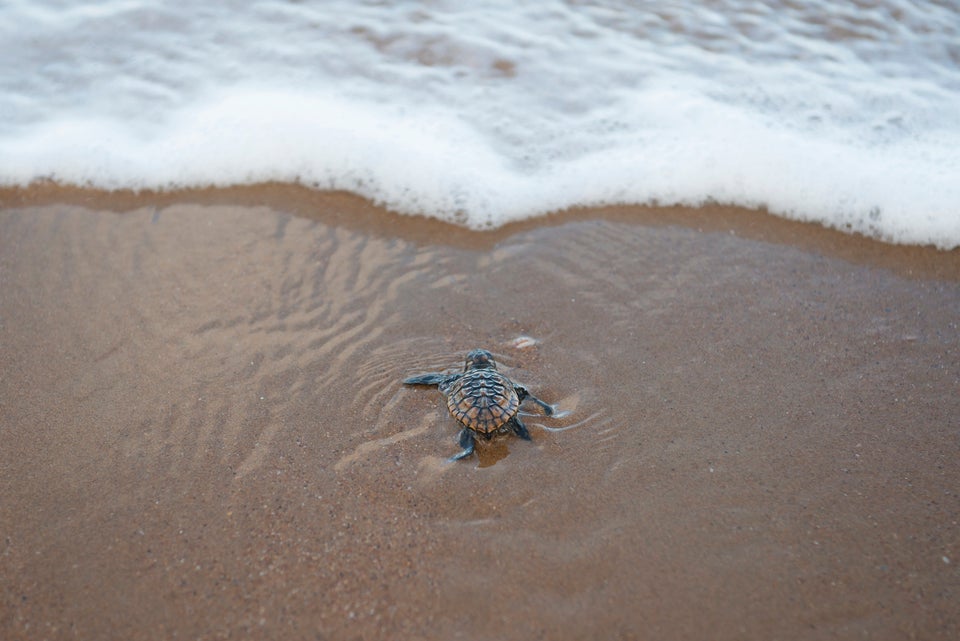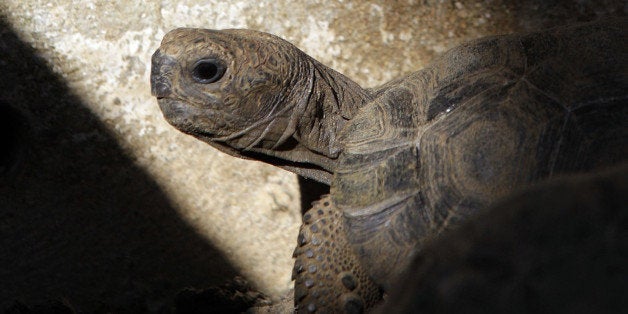
For the first time in more than one hundred years, researchers have found newborn baby tortoises on the tiny Galapagos island of Pinzón. It's a major win for a population that has struggled after being nearly decimated by human impact.
"We found ten tiny, newly hatched saddleback tortoises on the island early last month," wrote a trio of researchers in the January 15th issue of the journal Nature. "There could be many more, because their size and camouflage makes them hard to spot. Our discovery indicates that the giant tortoise is once again able to reproduce on its own in the wild."
Whalers and invasive rats devastated the species when they arrived aboard ships in the 17th and 18th centuries; the rats then spent more than a century preying on the island's hatchlings, according to the Galapagos Conservancy.
The tiny turtle find validates more than 50 years of conservation efforts, which have included growing hatchlings in captivity until they are large enough to be released without falling prey to rats, as well as a push to eradicate the rodents. The arid island was finally declared rat-free in 2012.
The newborn tortoises are proof that the campaign to eliminate black rats on Pinzón has had a huge positive impact, according to Dr. James Gibbs, one of the researchers on the survey project and a professor at State University of New York’s College of Environmental Science and Forestry.
"This new bunch of 'little guys' is one of the important results of the rat eradication campaign," Gibbs explained on the Galapagos Conservancy blog shortly after the discovery in December, "tangible proof that with dedication, hard work, support, and heart, conservation efforts can effect positive change."
Since The Galapagos National Park was established in 1959, writes Gibbs, the tortoise population has rebounded from 100-200 "very old individuals" to a current population estimated at "well over 500."
H/T The Dodo
Related
Before You Go

